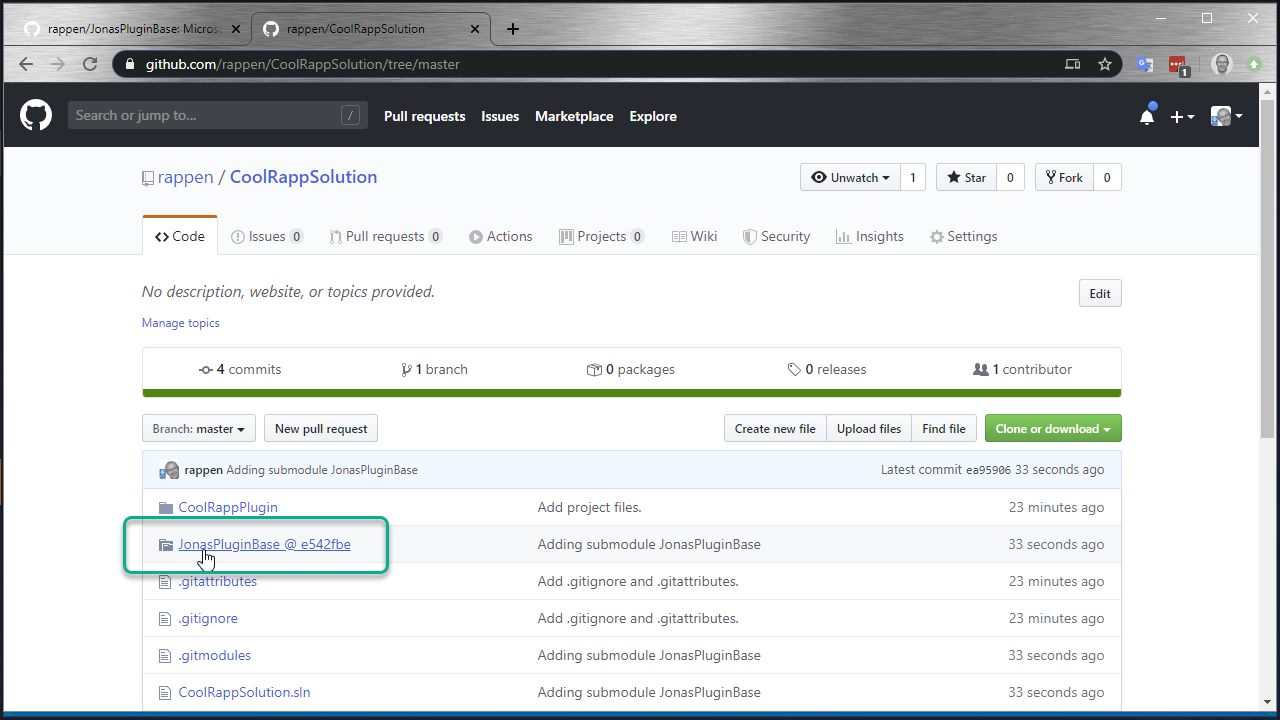

- UPDATE GIT SUBMODULE TO LATEST COMMIT HOW TO
- UPDATE GIT SUBMODULE TO LATEST COMMIT UPDATE
- UPDATE GIT SUBMODULE TO LATEST COMMIT SOFTWARE
While there are a variety of ways and frameworks to manage software dependencies, depending on software complexity, today I’ll cover one of the most common and easy to use methods called “ git submodule”. This is a classic example of how dependencies play a huge role in software lifecycle and why managing them efficiently becomes important. log4jt was a dependency in a variety of software and the vulnerabilities discovered affected all of them. This ensures that a small change breaks nothing and your project is not outdated and does not have any known security vulnerability or bugs.Ī good recent example of this is log4j, a popular framework for logging, initially released in 1999, which became a huge headache for many businesses at the end of 2021, including Apple, Microsoft and VMware. These dependencies are also evolving, and need to be updated and in sync with your main source tree. Sooner than later developers can find their code depending on software projects of other developers which are either open source, hosted online or being developed in-house, in maybe another department of the organisation. But these frameworks and libraries become dependencies of our projects, and as the software grows in complexity over time, it can become pretty challenging to efficiently manage these dependencies. Frameworks and libraries have made developers’ lives so easy that there’s no need to reinvent the wheel anymore when it comes to software development. Or don’t store the repository in the Cache (if the repo is not stored in cache the “checkout” will check out the latest version of the branch).Rarely any software project today is built from the ground up.Either specify a commit hash when you trigger a build (if the build is triggered for a git event the hash is always specified, so the right hash is always checked out).I’ll bring this up for a discussion with the team, to do a pull in this case instead of just a fetch (if no commit hash is specified only the branch, and the cache already includes the source code with that branch checked out).

It of course works if you specify a commit hash as the git clone step ensures that your repo is in the state what you specified in its inputs. Thanks for reporting the current version of the Git Clone step will not do a pull if all you define is to “clone the master branch” (without any commit hash, only the branch is provided) and you have a cache (so when the git clone step runs the repo is already there and the master branch is already checked out).

UPDATE GIT SUBMODULE TO LATEST COMMIT UPDATE
(use "git pull" to update your local branch) Your branch is behind 'origin/master' by 20 commits, and can be fast-forwarded. Warning: Permanently added ',192.30.253.113' (RSA) to the list of known hosts.

Reinitialized existing Git repository in /Users/vagrant/git/.git/ Git "submodule" "foreach" "git" "clean" "-x" "-d" "-f" HEAD is now at ec968d9 Merge pull request #352 from kishikawakatsumi/travis_retry Git "submodule" "foreach" "git" "reset" "-hard" "HEAD"Įntering 'SchedKit/3rd-Parties/KeychainAccess' HEAD is now at eda8670 Merge pull request #1 from schedorg/unit-test-fixes
UPDATE GIT SUBMODULE TO LATEST COMMIT HOW TO
How to make git-clone fast forward to the latest commit? When the workflow runs, git-clone is always stuck at the same commit SHA when the workflow was first run. I’ve only have scheduled build setup (no web hooks or trigger). I am using the build steps described here: How to Cache the Source Code directory


 0 kommentar(er)
0 kommentar(er)
